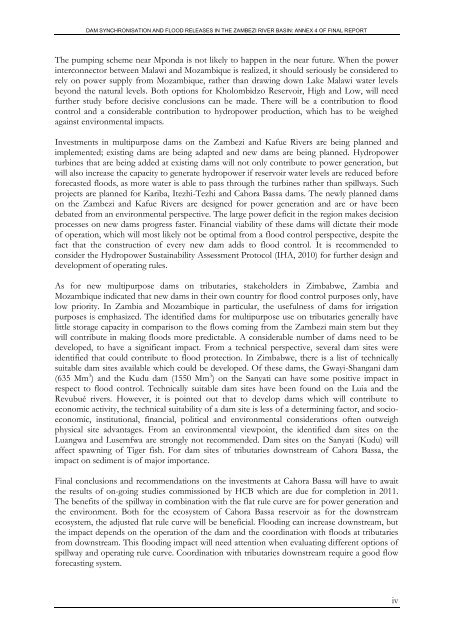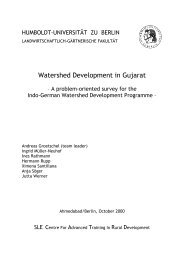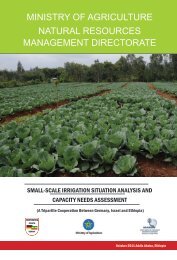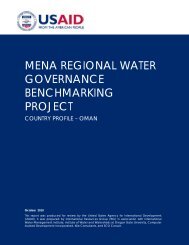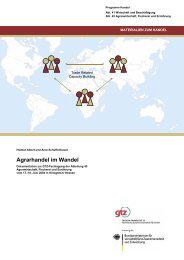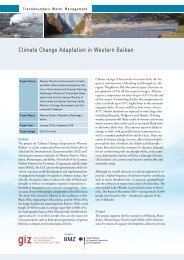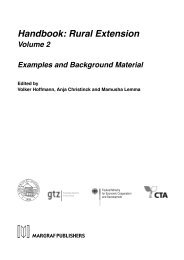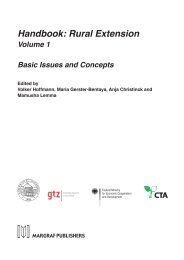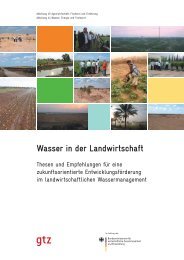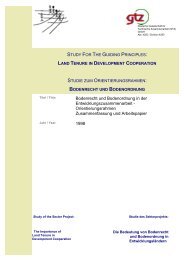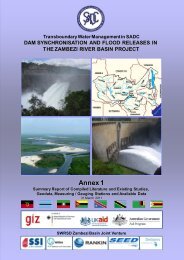Dam Synchronisation and Flood Releases - agriwaterpedia.info
Dam Synchronisation and Flood Releases - agriwaterpedia.info
Dam Synchronisation and Flood Releases - agriwaterpedia.info
You also want an ePaper? Increase the reach of your titles
YUMPU automatically turns print PDFs into web optimized ePapers that Google loves.
DAM SYNCHRONISATION AND FLOOD RELEASES IN THE ZAMBEZI RIVER BASIN: ANNEX 4 OF FINAL REPORT<br />
The pumping scheme near Mponda is not likely to happen in the near future. When the power<br />
interconnector between Malawi <strong>and</strong> Mozambique is realized, it should seriously be considered to<br />
rely on power supply from Mozambique, rather than drawing down Lake Malawi water levels<br />
beyond the natural levels. Both options for Kholombidzo Reservoir, High <strong>and</strong> Low, will need<br />
further study before decisive conclusions can be made. There will be a contribution to flood<br />
control <strong>and</strong> a considerable contribution to hydropower production, which has to be weighed<br />
against environmental impacts.<br />
Investments in multipurpose dams on the Zambezi <strong>and</strong> Kafue Rivers are being planned <strong>and</strong><br />
implemented; existing dams are being adapted <strong>and</strong> new dams are being planned. Hydropower<br />
turbines that are being added at existing dams will not only contribute to power generation, but<br />
will also increase the capacity to generate hydropower if reservoir water levels are reduced before<br />
forecasted floods, as more water is able to pass through the turbines rather than spillways. Such<br />
projects are planned for Kariba, Itezhi-Tezhi <strong>and</strong> Cahora Bassa dams. The newly planned dams<br />
on the Zambezi <strong>and</strong> Kafue Rivers are designed for power generation <strong>and</strong> are or have been<br />
debated from an environmental perspective. The large power deficit in the region makes decision<br />
processes on new dams progress faster. Financial viability of these dams will dictate their mode<br />
of operation, which will most likely not be optimal from a flood control perspective, despite the<br />
fact that the construction of every new dam adds to flood control. It is recommended to<br />
consider the Hydropower Sustainability Assessment Protocol (IHA, 2010) for further design <strong>and</strong><br />
development of operating rules.<br />
As for new multipurpose dams on tributaries, stakeholders in Zimbabwe, Zambia <strong>and</strong><br />
Mozambique indicated that new dams in their own country for flood control purposes only, have<br />
low priority. In Zambia <strong>and</strong> Mozambique in particular, the usefulness of dams for irrigation<br />
purposes is emphasized. The identified dams for multipurpose use on tributaries generally have<br />
little storage capacity in comparison to the flows coming from the Zambezi main stem but they<br />
will contribute in making floods more predictable. A considerable number of dams need to be<br />
developed, to have a significant impact. From a technical perspective, several dam sites were<br />
identified that could contribute to flood protection. In Zimbabwe, there is a list of technically<br />
suitable dam sites available which could be developed. Of these dams, the Gwayi-Shangani dam<br />
(635 Mm 3 ) <strong>and</strong> the Kudu dam (1550 Mm 3 ) on the Sanyati can have some positive impact in<br />
respect to flood control. Technically suitable dam sites have been found on the Luia <strong>and</strong> the<br />
Revubué rivers. However, it is pointed out that to develop dams which will contribute to<br />
economic activity, the technical suitability of a dam site is less of a determining factor, <strong>and</strong> socioeconomic,<br />
institutional, financial, political <strong>and</strong> environmental considerations often outweigh<br />
physical site advantages. From an environmental viewpoint, the identified dam sites on the<br />
Luangwa <strong>and</strong> Lusemfwa are strongly not recommended. <strong>Dam</strong> sites on the Sanyati (Kudu) will<br />
affect spawning of Tiger fish. For dam sites of tributaries downstream of Cahora Bassa, the<br />
impact on sediment is of major importance.<br />
Final conclusions <strong>and</strong> recommendations on the investments at Cahora Bassa will have to await<br />
the results of on-going studies commissioned by HCB which are due for completion in 2011.<br />
The benefits of the spillway in combination with the flat rule curve are for power generation <strong>and</strong><br />
the environment. Both for the ecosystem of Cahora Bassa reservoir as for the downstream<br />
ecosystem, the adjusted flat rule curve will be beneficial. <strong>Flood</strong>ing can increase downstream, but<br />
the impact depends on the operation of the dam <strong>and</strong> the coordination with floods at tributaries<br />
from downstream. This flooding impact will need attention when evaluating different options of<br />
spillway <strong>and</strong> operating rule curve. Coordination with tributaries downstream require a good flow<br />
forecasting system.<br />
iv


